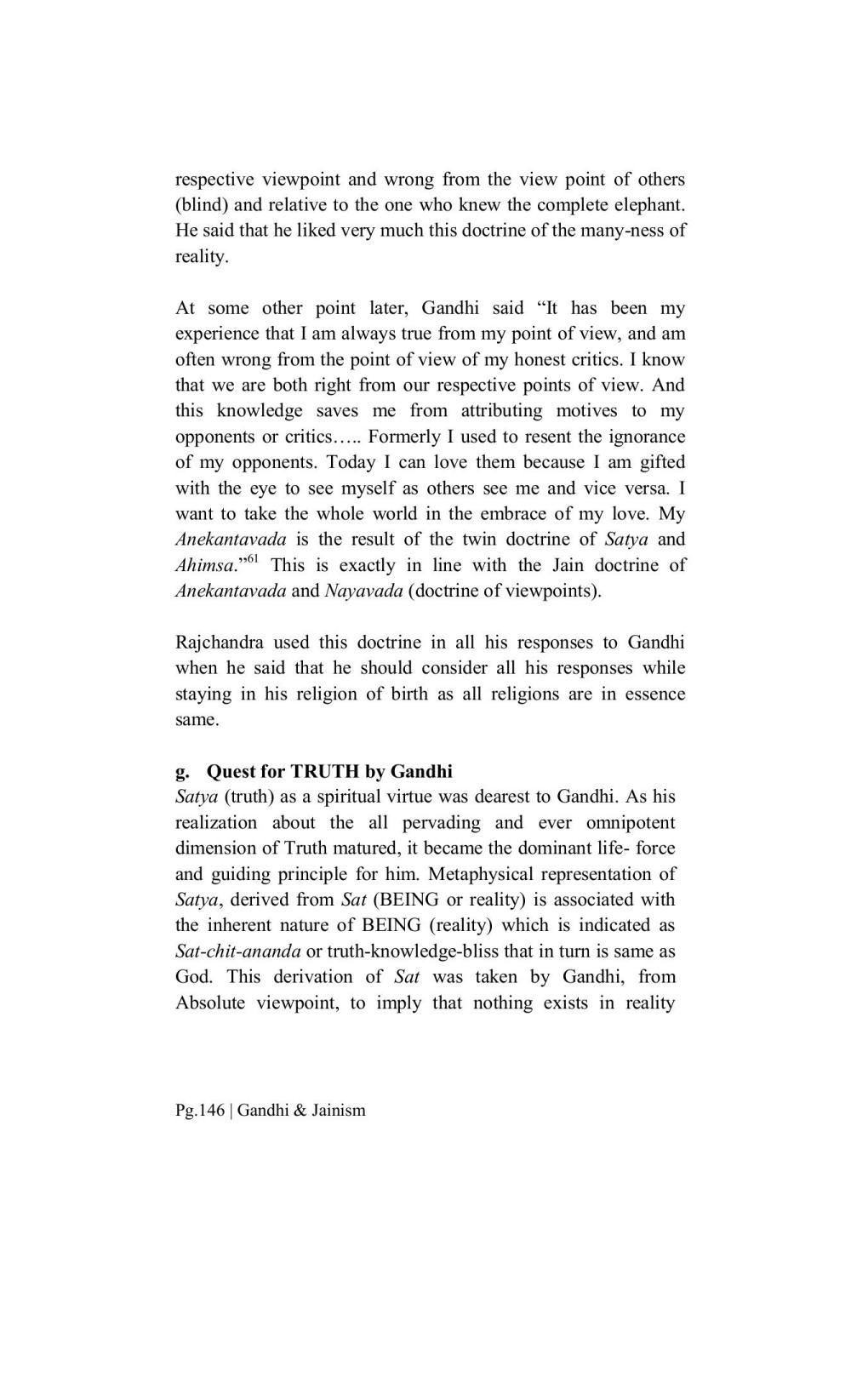________________
respective viewpoint and wrong from the view point of others (blind) and relative to the one who knew the complete elephant. He said that he liked very much this doctrine of the many-ness of reality.
At some other point later, Gandhi said "It has been my experience that I am always true from my point of view, and am often wrong from the point of view of my honest critics. I know that we are both right from our respective points of view. And this knowledge saves me from attributing motives to my opponents or critics..... Formerly I used to resent the ignorance of my opponents. Today I can love them because I am gifted with the eye to see myself as others see me and vice versa. I want to take the whole world in the embrace of my love. My Anekantavada is the result of the twin doctrine of Satya and Ahimsa.":61 This is exactly in line with the Jain doctrine of Anekantavada and Nayavada (doctrine of viewpoints).
Rajchandra used this doctrine in all his responses to Gandhi when he said that he should consider all his responses while staying in his religion of birth as all religions are in essence same.
g. Quest for TRUTH by Gandhi Satya (truth) as a spiritual virtue was dearest to Gandhi. As his realization about the all pervading and ever omnipotent dimension of Truth matured, it became the dominant life-force and guiding principle for him. Metaphysical representation of Satya, derived from Sat (BEING or reality) is associated with the inherent nature of BEING (reality) which is indicated as Sat-chit-ananda or truth-knowledge-bliss that in turn is same as God. This derivation of Sat was taken by Gandhi, from Absolute viewpoint, to imply that nothing exists in reality
Pg.146 Gandhi & Jainism




